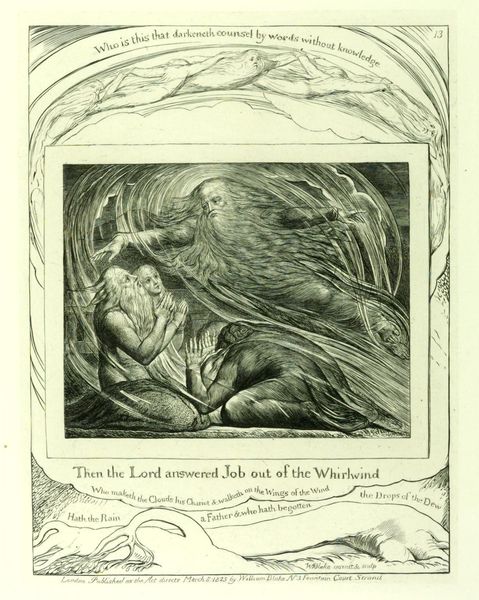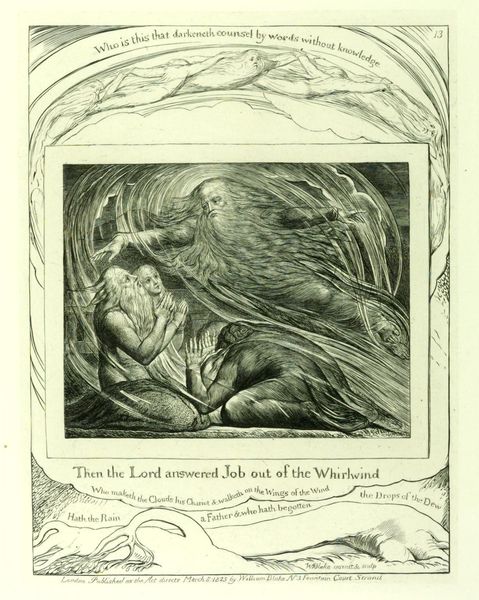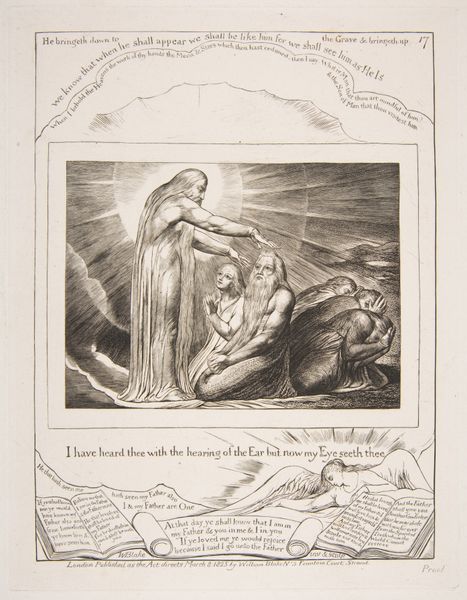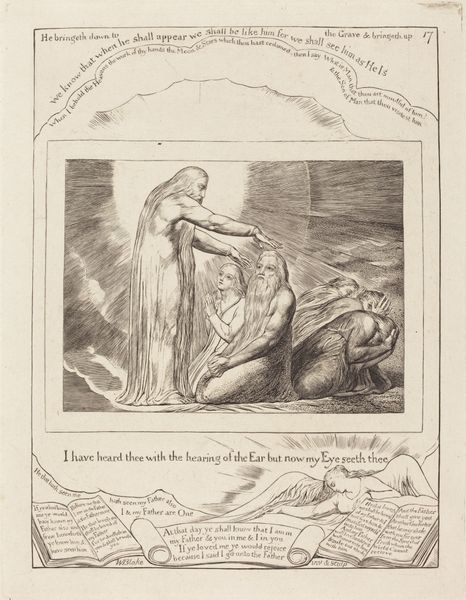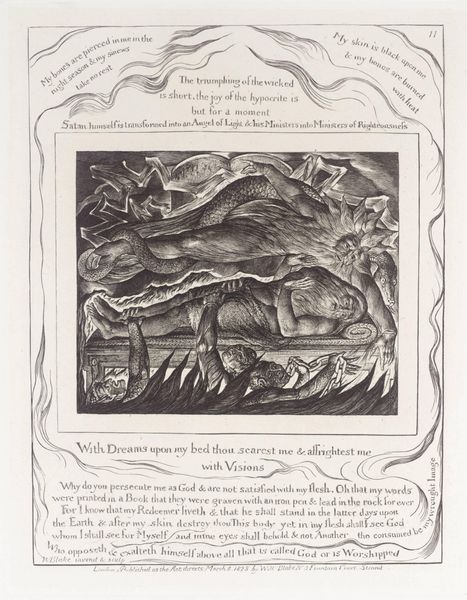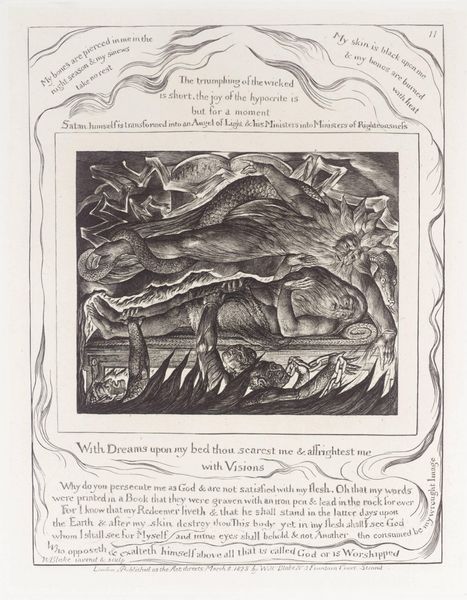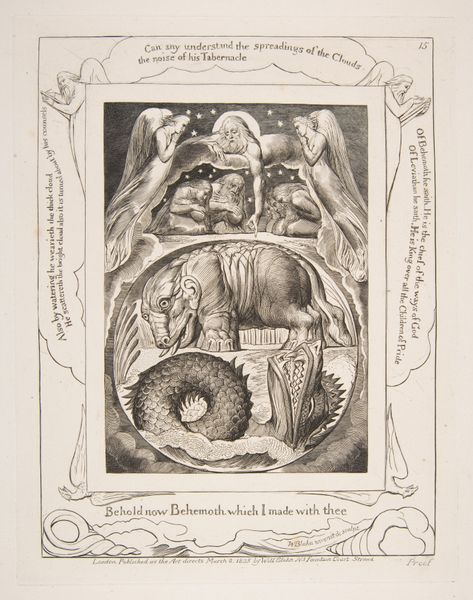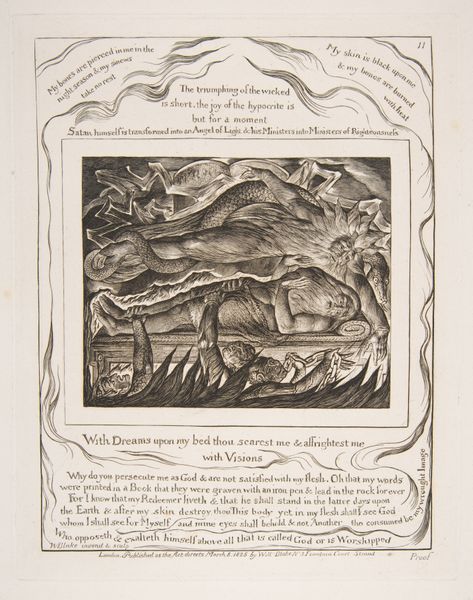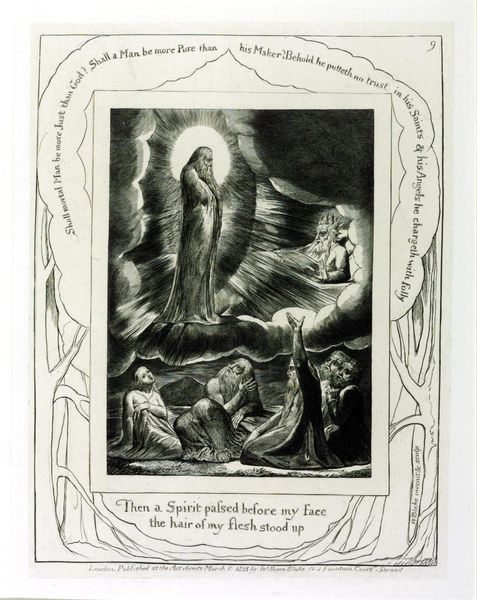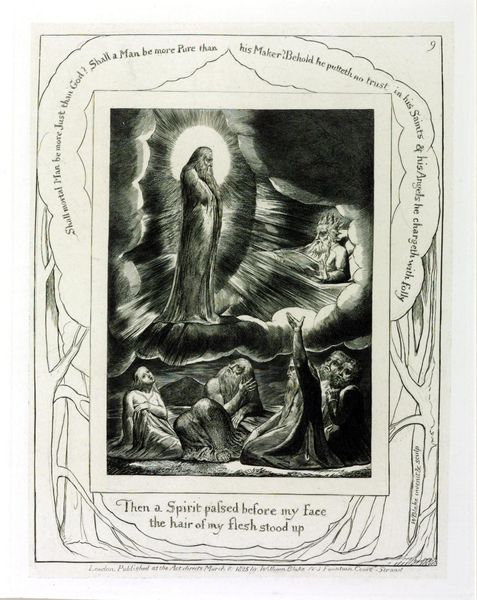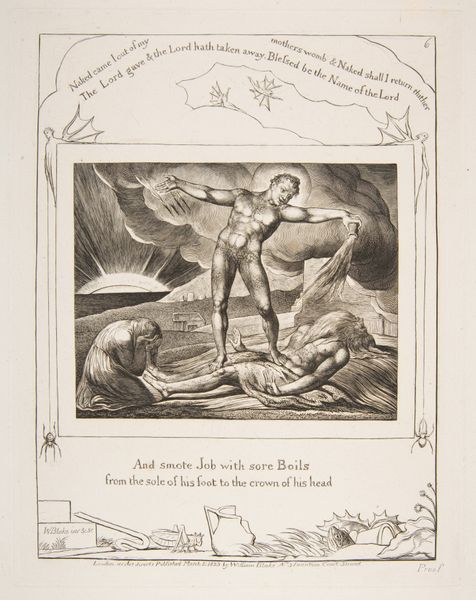
The Lord Answering Job out of the Whirlwind 1825 - 1826
0:00
0:00
drawing, print, etching, engraving
#
drawing
#
narrative-art
# print
#
etching
#
etching
#
figuration
#
romanticism
#
men
#
history-painting
#
engraving
Dimensions: plate: 8 1/2 x 6 5/8 in. (21.6 x 16.8 cm) sheet: 16 5/16 x 10 7/8 in. (41.4 x 27.6 cm)
Copyright: Public Domain
Curator: This etching and engraving, executed between 1825 and 1826, is William Blake’s “The Lord Answering Job out of the Whirlwind.” It's a powerful piece. Editor: Yes, instantly I'm struck by the contrast. Look at how densely worked the central image is, all these swirling lines creating that sense of overwhelming force, versus the comparative clarity around the edges. Curator: Exactly. The whirlwind, emanating divine power, embodies the sublime, dwarfing Job and his family below. Note how Blake utilizes text interwoven with visual elements. He was always interested in marrying word and image. Editor: I am curious about his printing process here. Look at the line quality; it’s incredibly fine in some areas and much heavier in others. I wonder what kind of metal plate he was using and the tools employed to achieve this variation. Also, given the relatively small edition sizes for his prints, how accessible would something like this have been to the general public? Curator: Blake aimed to challenge rationalism by visualizing spiritual truths through a symbolic language of his own invention, drawing from the Bible, mythology, and his visionary experiences. Notice the posture of the figures: they express submission and awe in the face of the divine. Editor: Right, and those figures appear to be placed in relationship with that raw, unrefined power… This tension—the fragility of the human form amidst elemental forces—is further reinforced by the contrast in technique: dense versus sparse, fine versus bold. The material construction itself mimics the visual narrative. Curator: Blake considered the Book of Job to be a crucial allegory for spiritual testing and redemption, a recurring motif within his work. It serves as a powerful statement about faith in the face of suffering. Editor: And understanding the making process offers another perspective. It ties into Blake's ethos of independent production, creating an art outside established academies. It all circles back to that material grounding. It really underscores his individual artistic freedom, doesn't it? Curator: It certainly does. Examining his personal symbolism and philosophy embedded into the work gives us access to the emotional weight carried throughout Blake's images. Editor: It's that marriage of materiality and idea that resonates, isn’t it?
Comments
No comments
Be the first to comment and join the conversation on the ultimate creative platform.
